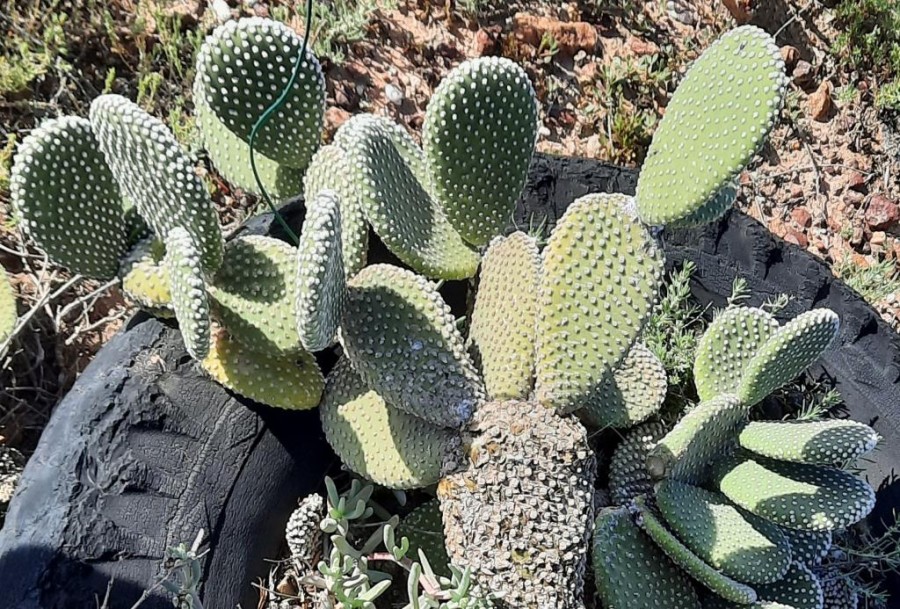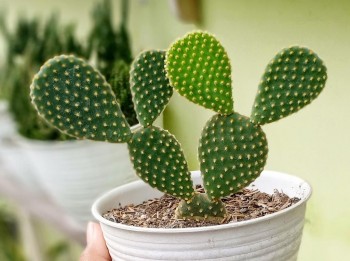ILLEGAL WEED ALERT: Bunny ears cactus (Opuntia microdasys)
06th Mar 2023
Also known as yellow bunny ears, goldplush, teddy bear cactus, cacti. Since 2021, this cactus is illegal to sell, swap or gift in NSW. We have been seeing this sold on social media, selling sites and at local markets.
Bunny ears cactus is a branched succulent shrub that grows up to 60 cm tall. It is usually a low, creeping plant with shallow roots. The pads grow in pairs and look like a pair of rabbit ears.
• bright green when young, pale green when older
• 10–15 cm long and 6–12 cm wide
• fleshy and covered in velvety hairs
• oblong to circular
Areoles:
• are 5–10 mm apart
• contain dense tufts of white, yellow to golden brown bristles each 5–10 mm long
• usually don’t have spines, though rarely there may be one.
Flowers are:
• yellow, sometimes tinged with red
• 3–5 cm in diameter
• usually on the top section of the pads on both the margins and the faces.
Fruit are:
• red to purple
• 3 cm in diameter
• round
• covered in areoles and bristles.
Bunny ears cactus is not known to produce seeds in Australia.
Bunny ears cactus looks similar to blind cactus (Opuntia rufida), which has reddish-brown bristles. Blind cactus is also sometimes called bunny ears cactus.
There are natural variations in bunny ears cactus and some of these are intentionally selected and cultivated by collectors and growers. Opuntia microdasys form 'monstrosa' (crazy bunny ears) has pads that are fused together and curved rather than flat.
The biosecurity duty applies to all variations and forms.





